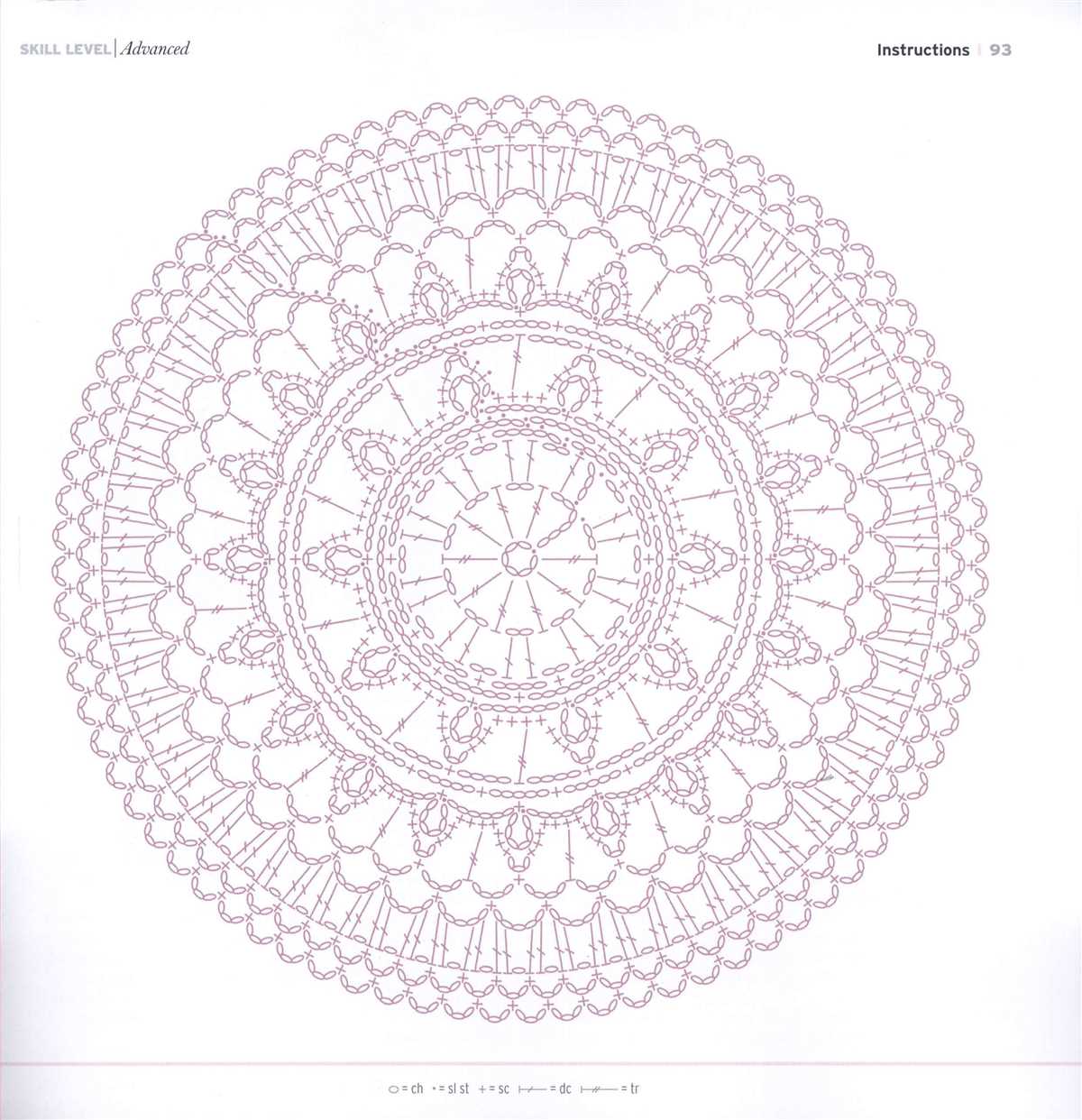
A mandala is a geometric pattern that represents the universe in Hindu and Buddhist symbolism. Knitting a mandala can be a calming and meditative experience, as well as a creative way to incorporate this ancient art form into your daily life.
The knit mandala pattern is a versatile design that can be used in a variety of projects. Whether you want to create a cozy blanket, a decorative pillow, or even a piece of wall art, the mandala pattern can be easily adapted to suit your needs.
Creating a knit mandala involves using circular knitting needles and a combination of simple knit and purl stitches. The pattern typically starts from the center and expands in a circular shape, creating a beautiful symmetrical design.
One of the great things about knitting a mandala is that you can experiment with different colors and textures. By choosing yarns of different weights and combining them in unique ways, you can create a one-of-a-kind mandala that truly reflects your own personal style.
Whether you’re a seasoned knitter or just starting out, knitting a mandala can be a fun and rewarding project. So grab your needles, choose your favorite yarns, and start creating your own beautiful mandala masterpiece.
What is a Mandala Pattern and How to Knit It?
A mandala pattern is a circular design that is often used as a spiritual symbol in various cultures. It is believed to represent wholeness, balance, and unity. In knitting, a mandala pattern can be created by using different colors, stitches, and textures to form a circular shape.
To knit a mandala pattern, you will need a set of circular knitting needles and a variety of yarns in different colors. Start by casting on a small number of stitches, such as 8 or 12, and join in the round. Then, begin working the mandala pattern by following a chart or instructions that outline the pattern stitch by stitch.
Here are the steps to knit a mandala pattern:
- Cast on: Start by casting on a small number of stitches, such as 8 or 12, and join in the round.
- Begin the pattern: Follow the chart or instructions to create the desired mandala pattern. This may involve using different colors, stitches, and textures to form a circular design.
- Continue knitting: Repeat the pattern row by row until the mandala is complete. This may involve changing colors and following different stitch patterns.
- Bind off: Once the desired size of the mandala is reached, bind off the stitches to secure the edges.
- Blocking: To enhance the shape and flatten the knitted mandala, wet block it by soaking it in water, gently squeezing out the excess, and shaping it to the desired dimensions. Allow it to dry completely before removing the pins or blocking wires.
Knitting a mandala pattern can be a fun and creative project that allows you to experiment with different colors and stitches. It can be used as a decorative piece or incorporated into various projects such as blankets, pillows, or even wall hangings. The possibilities are endless when it comes to creating beautiful mandala patterns through knitting.
Benefits of Knitting Mandala Patterns
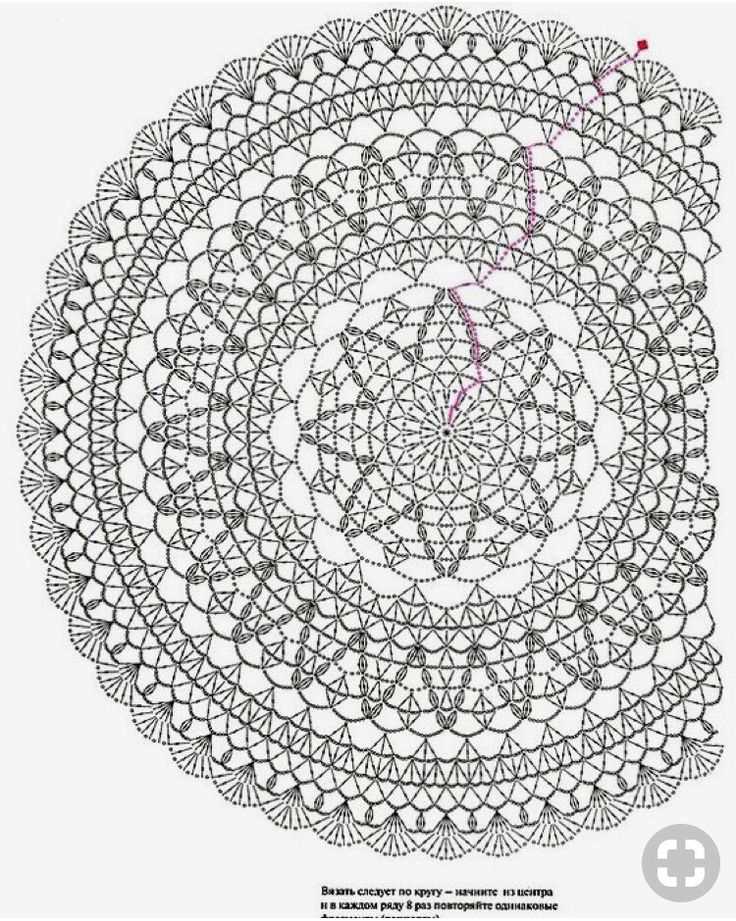
Knitting mandala patterns offers a range of benefits for both beginners and experienced knitters. These mesmerizing circular designs not only make beautiful home decor pieces but also provide a calming and therapeutic experience.
1. Stress Relief: Knitting mandala patterns can be a soothing and meditative activity that helps reduce stress and anxiety. The repetitive nature of the stitches and the mesmerizing patterns can help shift the focus away from everyday worries and promote relaxation.
2. Mindfulness Practice: Creating intricate mandala patterns requires focus and concentration. By immersing yourself in the knitting process, you can cultivate a sense of mindfulness and be fully present in the moment. It’s a wonderful way to practice mindfulness and enhance your overall well-being.
3. Creativity and Self-Expression: Knitting mandalas allows you to unleash your creativity and explore different color combinations and stitch variations. You can customize the patterns to reflect your personal style and create unique and meaningful pieces. It’s a great opportunity to express yourself through knitting.
4. Skill Development: Knitting mandalas can help improve your knitting skills. As you work on intricate stitch patterns and learn new techniques, you’ll become more confident and proficient in your knitting abilities. It’s a great way to challenge yourself and expand your skill set.
5. Home Decor and Gifts: Finished mandala pieces make stunning home decor items. You can frame them or use them as wall hangings, table mats, or even pillow covers. They also make beautiful handmade gifts for friends and loved ones, showcasing your creativity and thoughtfulness.
Knitting mandala patterns offer a wonderful outlet for creativity and relaxation, while also allowing you to enhance your knitting skills. Whether you’re a beginner or an experienced knitter, exploring the world of mandala patterns can be a fulfilling and rewarding experience.
Choosing the Right Yarn for Knitting Mandala Patterns
When it comes to knitting mandala patterns, choosing the right yarn is crucial. The type and quality of yarn can greatly impact the final look and feel of the mandala, so it’s important to consider a few factors before making your selection.
1. Fiber Content: The first thing to consider is the fiber content of the yarn. Different fibers have different properties, so think about what you want to achieve with your mandala. For a soft and cozy feel, consider using natural fibers like merino wool or alpaca. If you’re looking for a more durable option, acrylic yarn can be a great choice.
2. Weight: The weight of the yarn will determine the thickness and drape of your mandala. Depending on your desired outcome, you can choose from different weights such as lace, fingering, sport, or worsted. Thinner yarns will create a more delicate and intricate mandala, while thicker yarns will give a bolder and more substantial look.
3. Color Palette: Mandala patterns often feature intricate designs and colorwork. When selecting yarn, consider the color palette you want to work with. Some yarns come in solid colors, while others have variegated or self-striping options. Take into account how the colors will interact with the pattern and choose yarn that complements your design.
4. Yardage and Quantity: Before starting your project, make sure to check the yardage and quantity of yarn needed for the mandala pattern. Depending on the size and complexity of the design, you may need different amounts of yarn. It’s always a good idea to buy a little extra to ensure you have enough to complete your project.
5. Texture and Composition: Consider the texture and composition of the yarn when choosing for your mandala. Some yarns have a smooth and even texture, while others have a more textured or bouclé appearance. Think about how the texture will enhance or complement the pattern you’re working with.
Overall, take your time when choosing yarn for knitting mandala patterns. Consider the fiber content, weight, color palette, yardage, and texture to find the perfect yarn for your project. Remember, the right yarn can elevate your mandala and make it a true work of art.
Essential Tools and Supplies for Knitting Mandala Patterns
Knitting mandala patterns can be a delightful and fulfilling activity, but having the right tools and supplies is crucial to ensure a successful and enjoyable knitting experience. Whether you are a beginner or an experienced knitter, here are some essential items you will need to get started:
1. Knitting Needles:
A good set of knitting needles is the foundation of any knitting project, and knitting mandala patterns are no exception. Circular needles are recommended for knitting mandalas, as they allow you to easily accommodate the increasing number of stitches and create a flat, circular shape. Look for needles with a smooth surface and a comfortable grip, as you will be spending a significant amount of time working with them.
2. Yarn:
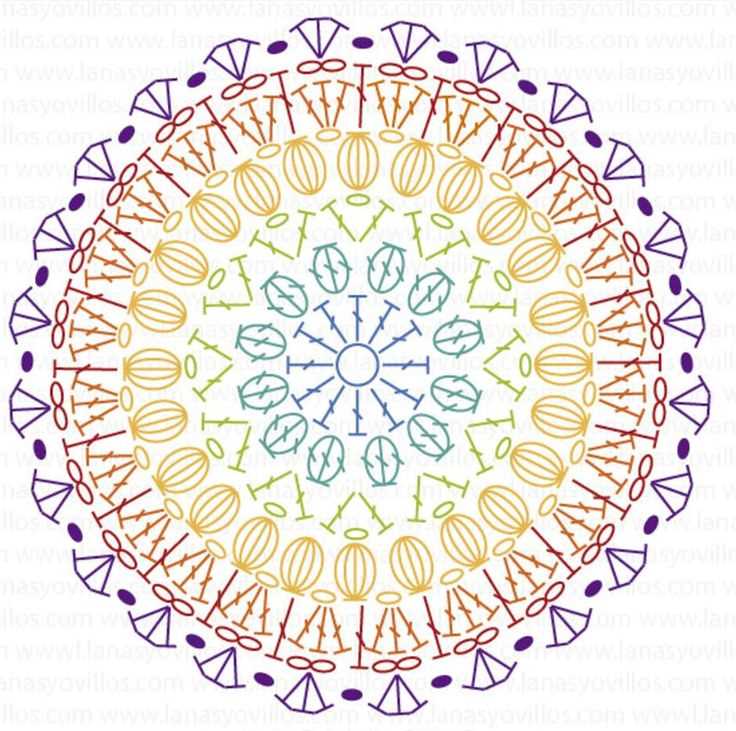
Choosing the right yarn is essential for achieving the desired texture and appearance in your knitted mandala. Opt for a soft and lightweight yarn that is suitable for the chosen pattern. Variegated yarn can add an extra touch of visual interest to your mandala, but solid-colored yarns work just as well. Be sure to check the recommended gauge and yardage for the pattern you are following to ensure you have enough yarn to complete your project.
3. Stitch Markers:
Stitch markers are invaluable tools for keeping track of your stitches and pattern repeats. They can help you easily identify different sections of your mandala and prevent mistakes. Choose stitch markers that are easy to slide on and off the needles, and opt for contrasting colors that stand out against your yarn. You can also use different types of stitch markers to mark specific stitches or pattern instructions.
4. Tapestry Needle:
A tapestry needle is essential for weaving in loose ends and finishing your knitted mandala. Look for a needle with a large eye that can accommodate your yarn, as well as a blunt tip to prevent snagging and splitting the fibers. A tapestry needle will also come in handy for any seaming or joining required in your pattern.
In addition to these essentials, you may also find it helpful to have a row counter, scissors, and a knitting gauge ruler on hand. With the right tools and supplies, you will be well-equipped to embark on your knitting journey and create beautiful mandalas that showcase your creativity and skill.
Step-by-Step Guide to Knitting a Mandala Pattern
Knitting a mandala pattern can be a fun and rewarding project for knitters of all skill levels. The intricate design and vibrant colors make for a mesmerizing finished product that can be used as a decorative wall hanging, a centerpiece, or even a cozy blanket. Whether you’re a beginner or an experienced knitter, this step-by-step guide will help you create your own beautiful mandala pattern.
Materials Needed:
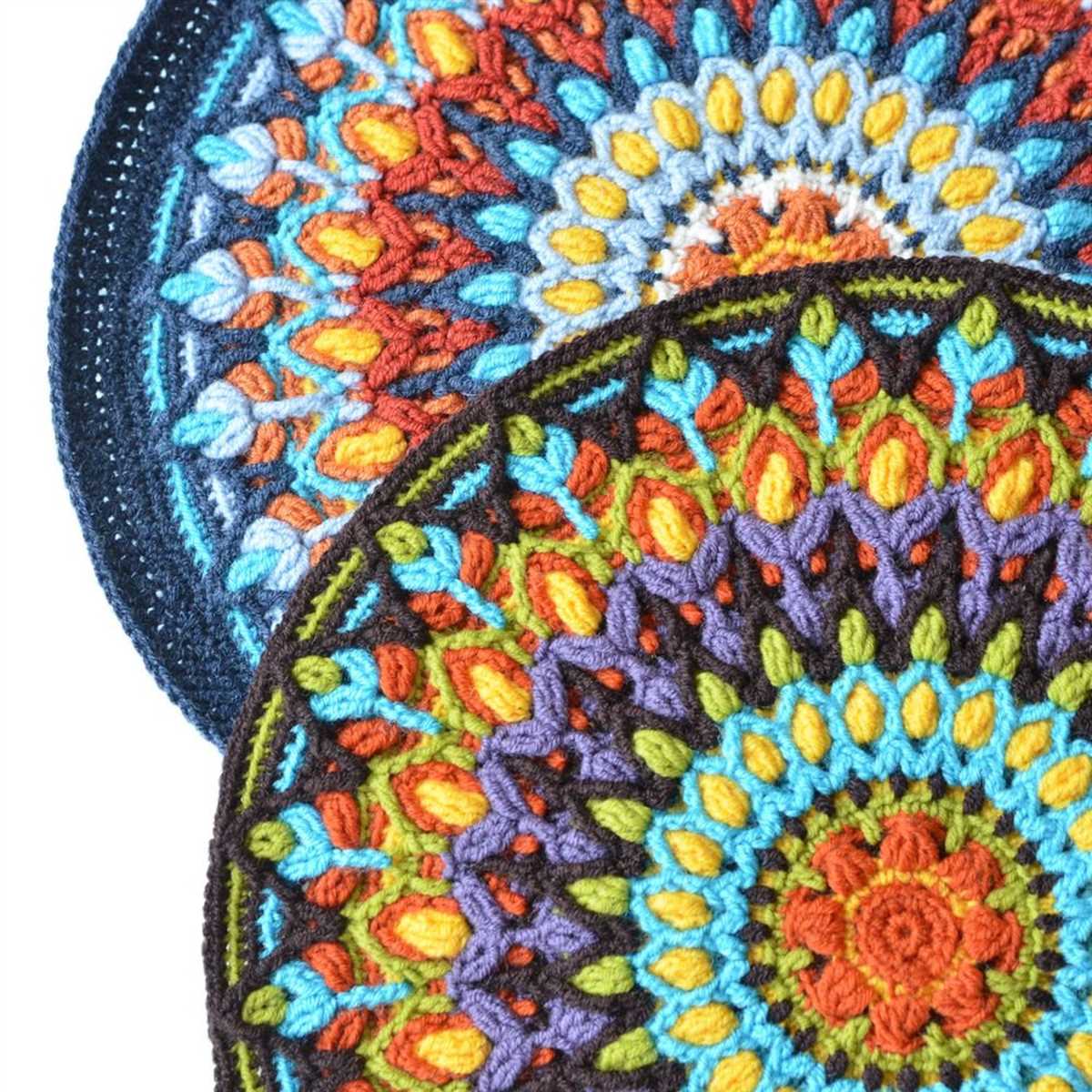
- Yarn: Choose a selection of colorful yarns in various shades.
- Knitting Needles: Select the appropriate knitting needles for your chosen yarn.
- Tapestry Needle: This will be used for weaving in loose ends.
- Scissors: A pair of sharp scissors will be needed to cut the yarn.
Step 1: Cast On
To begin, cast on the desired number of stitches onto your knitting needles. The number of stitches will depend on the size of mandala you wish to create. For a smaller mandala, cast on around 60-80 stitches, and for a larger mandala, cast on around 120-150 stitches.
Step 2: Knit the Base
Once you have cast on, start knitting the base row in your chosen stitch pattern. This can be a simple knit and purl pattern, or you can experiment with more complex stitches such as cables or lace. Knit in the round until the base of the mandala is the desired size.
Step 3: Begin the Mandala Design
Next, it’s time to start incorporating the mandala design into your knitting. This can be done through various techniques such as color changes, stitch patterns, and increasing or decreasing stitches. Use your creativity to create a unique and eye-catching design.
Step 4: Continue Knitting
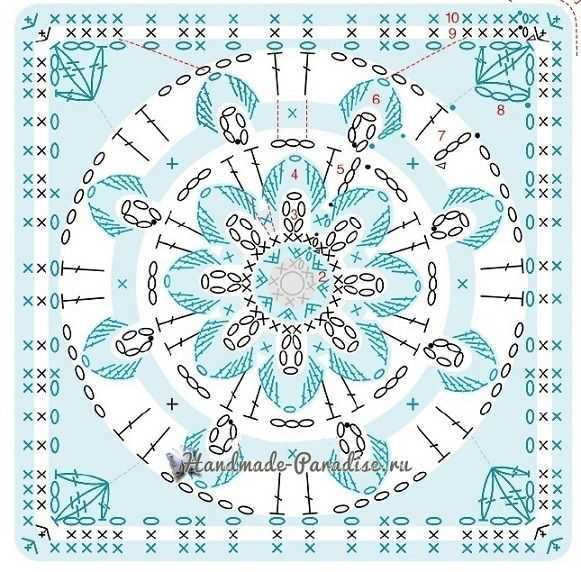
As you continue knitting, keep adding new elements to your mandala design. Experiment with different colors, stitch patterns, and textures to create a visually interesting pattern. Be sure to keep the tension consistent throughout to ensure a balanced finished mandala.
Step 5: Finishing Touches
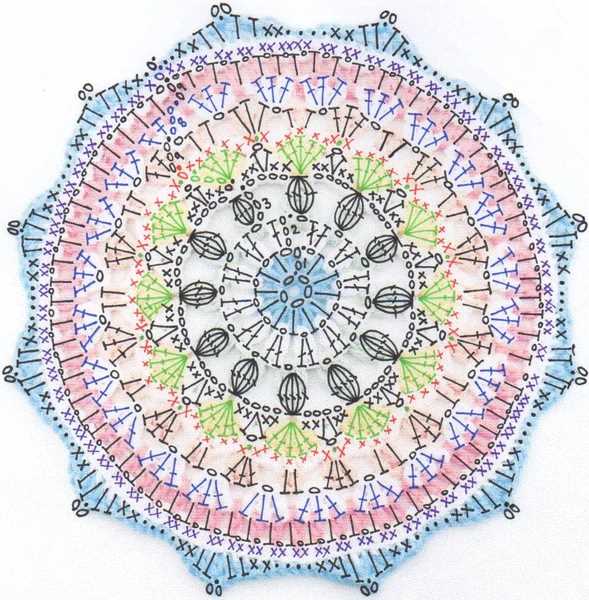
Once you have completed your mandala pattern, it’s time to add the finishing touches. Weave in any loose ends using a tapestry needle, and block your mandala to give it a polished look. Blocking involves wetting your knitted piece, shaping it, and allowing it to dry flat. This will help to even out any uneven stitches and give your mandala a professional finish.
Follow these step-by-step instructions and let your creativity run wild as you knit your own beautiful mandala pattern. Enjoy the process and the stunning finished result that will surely be a unique and cherished piece of art.
Common Patterns and Designs for Mandala Knitting
Knitting mandalas is a popular craft that allows knitters to create beautiful circular patterns. There are several common patterns and designs that can be used when knitting mandalas, each with its own unique style and characteristics.
1. Geometric Patterns:
Geometric patterns are a popular choice for knitting mandalas. These designs typically feature repeating shapes and lines, creating a visually stunning effect. Common geometric patterns used in mandala knitting include squares, triangles, circles, and hexagons. These patterns can be combined to create intricate designs or used individually for a simpler, more minimalist look.
2. Floral Designs:
Another common theme in mandala knitting is floral designs. Knitters can incorporate flower motifs into their mandalas, using intricate stitches and color changes to create realistic or abstract floral patterns. Popular flower motifs for mandala knitting include roses, daisies, and sunflowers. These designs can add a touch of nature and femininity to the finished project.
3. Colorwork:
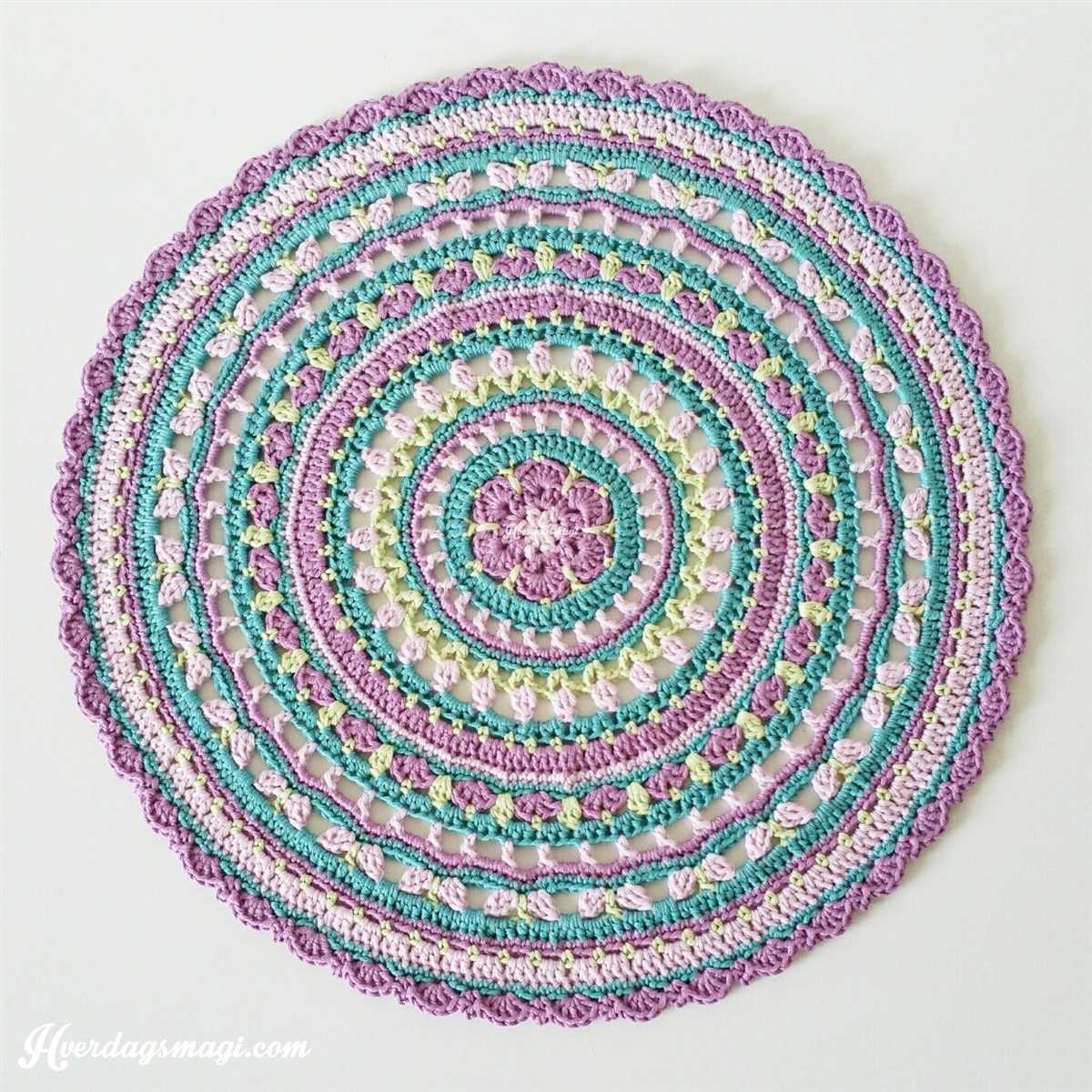
Colorwork is an essential element of mandala knitting. Knitters can use different colors of yarn to create vibrant and eye-catching designs. Common colorwork techniques for mandala knitting include stranded knitting, intarsia, and mosaic knitting. These techniques allow for unique color combinations and patterns, adding depth and visual interest to the mandala.
4. Lace Patterns:
Lace patterns are another popular choice for mandala knitting. These delicate and intricate designs can be achieved by using lace stitches and yarn-overs to create holes and openwork. Lace patterns can add an elegant and airy touch to the mandala, making it perfect for decorative purposes.
- Overall, mandala knitting offers endless possibilities for creativity and design.
- By experimenting with different patterns and techniques, knitters can create personalized mandalas that showcase their skills and style.
- Whether you prefer geometric patterns, floral designs, colorwork, or lace stitches, there is a mandala knitting pattern out there for you.
Tips and Tricks for Perfecting Your Mandala Knitting Skills
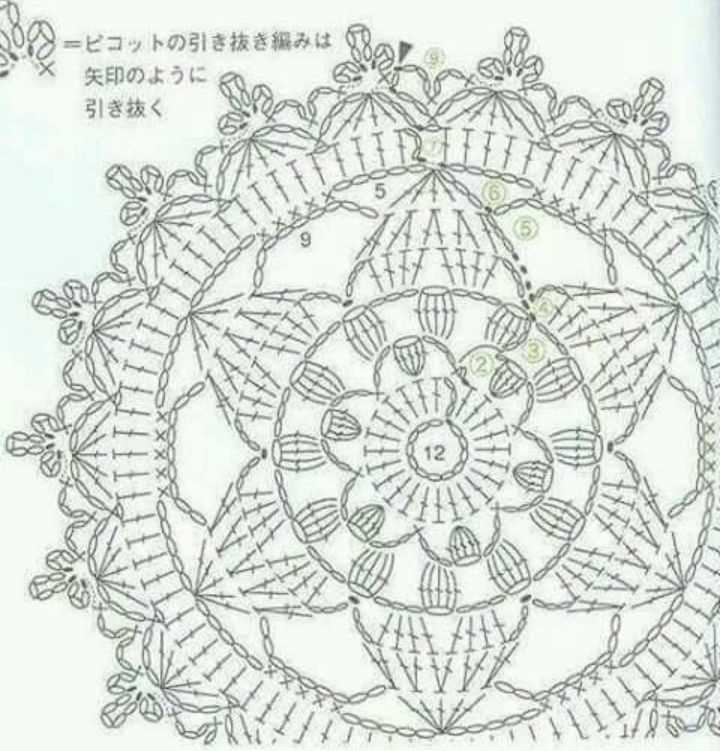
Knitting mandalas can be a fun and relaxing way to express your creativity and create beautiful pieces. However, it can also be a bit challenging, especially if you are new to the technique. Here are some tips and tricks to help you perfect your mandala knitting skills:
1. Choose the right yarn and needle size
When knitting a mandala, it’s important to choose the right yarn and needle size for your project. Make sure to select yarn that is compatible with the pattern and the desired outcome. If you want your mandala to have a drapey and flowing appearance, go for a lightweight yarn. On the other hand, if you prefer a more structured and defined look, opt for a thicker yarn. Additionally, consider using circular knitting needles to accommodate the increasing stitch count as your mandala grows.
2. Read the pattern carefully
Before diving into knitting your mandala, take the time to read the pattern carefully. Pay attention to any special stitch instructions, color changes, and stitch count variations. It can be helpful to highlight or make notes on the pattern to keep track of your progress. Understanding the pattern beforehand will make the knitting process smoother and prevent any mistakes along the way.
3. Block your mandala
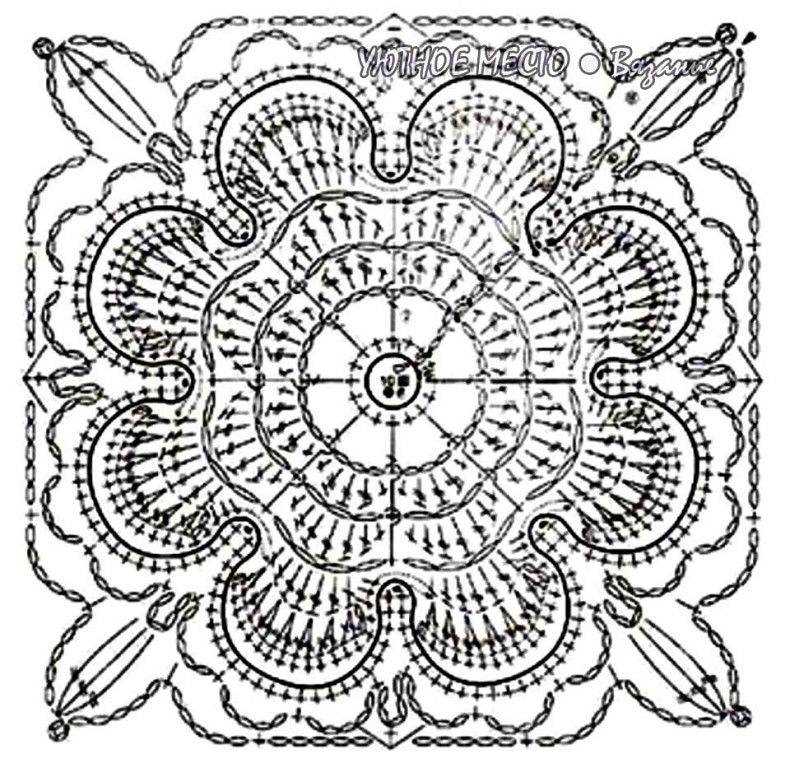
Blocking is an essential step in finishing your mandala and giving it a polished look. After completing your knitting, wet blocking or steam blocking can help even out any uneven stitches and bring out the true beauty of your design. It’s recommended to follow the specific blocking instructions provided in the pattern to achieve the best results.
4. Experiment with different color combinations
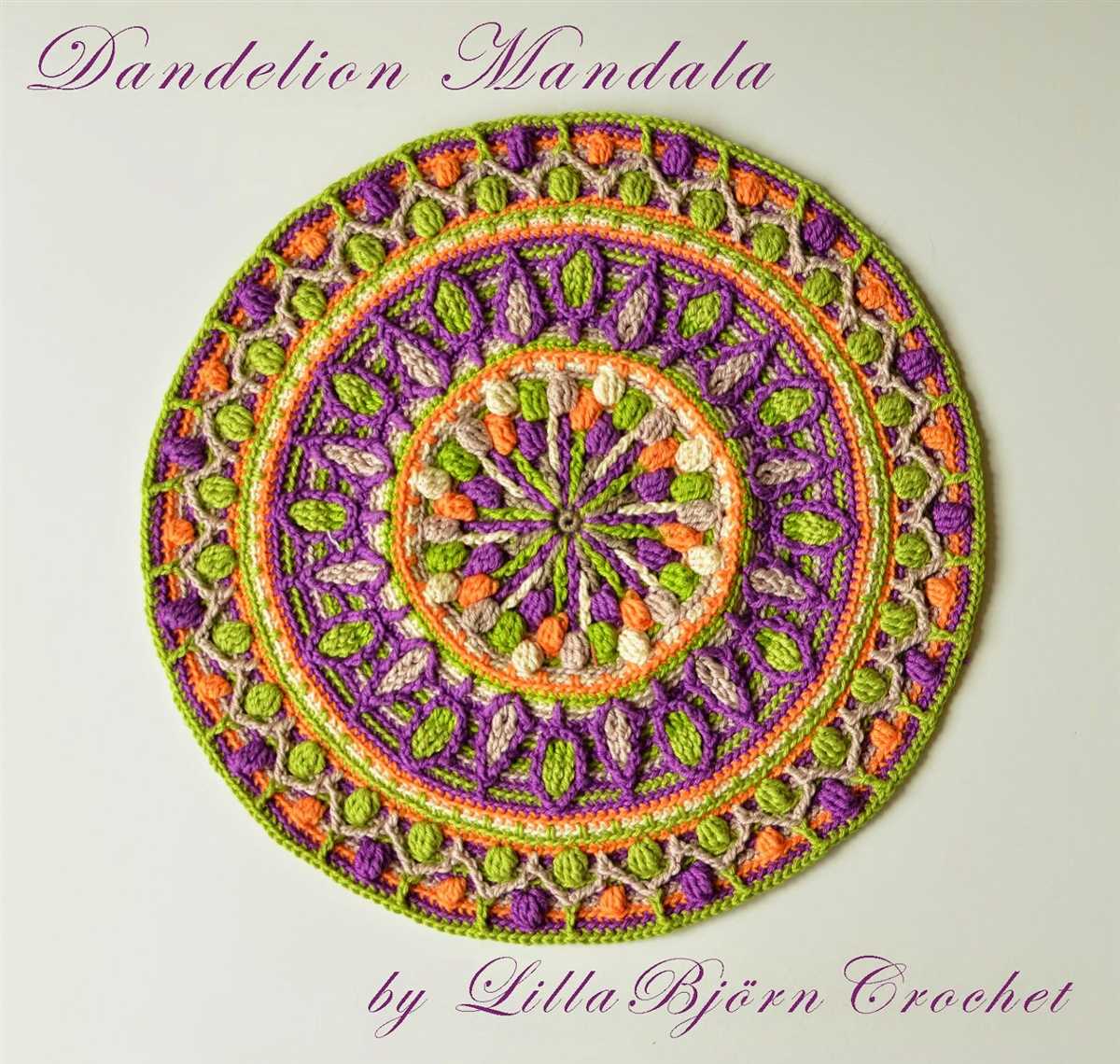
One of the exciting aspects of knitting mandalas is the opportunity to play with colors and create stunning visual effects. Don’t be afraid to experiment with different color combinations to make your mandala truly unique. Mixing bold and subtle colors, or working with gradients, can add depth and dimension to your piece.
5. Practice makes perfect
Like any knitting technique, mandala knitting requires practice to perfect your skills. Start with simple patterns and gradually work your way up to more intricate designs. Don’t get discouraged if your first few attempts don’t turn out exactly as you envisioned. Remember, every finished mandala is a work of art, and with each project, you will refine your technique and create even more beautiful pieces.
By following these tips and tricks, you’ll be able to enhance your mandala knitting skills and create stunning pieces that showcase your creativity and talent. So grab your yarn and needles, and start knitting your way to mandala perfection!
Adding Personal Touches to Your Knitted Mandala Patterns
Knitting mandalas can be a creative and fulfilling way to express your personality and add your own personal touch to your projects. Whether you’re following a pattern or designing your own, there are several ways to make your knitted mandalas truly unique.
Choose your colors: One of the easiest ways to personalize your mandala is by choosing your own colors. Consider using your favorite colors, or experiment with different color combinations to create a vibrant and eye-catching design. You can also use a color scheme that matches your home décor or reflects the season.
- Add texture: Another way to make your knitted mandalas stand out is by adding texture. You can incorporate different stitch patterns, such as cables or bobbles, to create a three-dimensional effect. Consider using different types of yarn, such as mohair or boucle, to add even more texture to your design.
- Embroidery and embellishments: If you want to take your personalization to the next level, consider adding embroidery or embellishments to your mandalas. You can add decorative stitches, such as French knots or satin stitches, to create intricate designs. You can also attach beads, sequins, or buttons to add some sparkle and shine.
- Customize the size: While most mandala patterns have a specific size, you can easily customize the size to suit your needs. If you want a smaller mandala, you can use a thinner yarn and smaller needles. If you want a larger mandala, you can use a bulky yarn and larger needles. This allows you to create a mandala that fits perfectly in the intended space or matches the size of other items in your home.
- Add a personal touch: Lastly, don’t forget to add a personal touch to your mandala. You can attach a tag or label with your name or initials, or even knit in a small symbol or motif that represents something meaningful to you. This will truly make your mandala one-of-a-kind and a reflection of your own personal style.
With these tips and ideas, you can transform any knitted mandala pattern into a unique and personalized work of art. Whether you’re gifting it to a loved one or using it to decorate your home, your knitted mandala will be a beautiful reflection of your creativity and individuality.
Exploring Advanced Techniques in Mandala Knitting
Mandala knitting is a beautiful and intricate art form that allows knitters to create stunning circular designs. While basic mandala patterns are relatively simple, skilled knitters can take their craft to the next level by learning and incorporating advanced techniques into their designs.
1. Intarsia: Intarsia is a technique where different colored yarns are used to create geometric patterns within the mandala. This technique allows for more intricate and detailed designs to be incorporated into the knitting. Knitters can experiment with different color combinations and placements to achieve unique and eye-catching results.
2. Lace Knitting: Lace knitting is a technique that involves creating delicate and intricate patterns by increasing and decreasing stitches. This technique adds a delicate and airy quality to the mandala, and can be used to create beautiful floral or geometric motifs. Knitters can experiment with different lace stitch patterns and chart designs to add a touch of elegance to their mandala.
3. Fair Isle Knitting: Fair Isle knitting is a technique that involves working with multiple colors in a single row to create intricate patterns. This technique allows for the incorporation of complex colorwork into the mandala, resulting in bold and vibrant designs. Knitters can experiment with different color combinations and motifs to create unique and visually striking mandalas.
4. Bead Knitting: Bead knitting is a technique where small beads are threaded onto the yarn and incorporated into the knitting. This technique adds a touch of sparkle and texture to the mandala, and can be used to create stunning details and embellishments. Knitters can experiment with different bead sizes, shapes, and placements to add dimension and interest to their mandala designs.
Incorporating these advanced techniques into mandala knitting can take your craft to the next level, allowing you to create intricate and visually stunning designs. Whether you choose to experiment with intarsia, lace knitting, Fair Isle knitting, or bead knitting, the possibilities for creativity and expression are endless. So grab your needles and yarn, and let your imagination run wild as you explore the world of advanced techniques in mandala knitting.
Popular Color Combinations for Mandala Patterns
Mandala patterns are known for their intricate and mesmerizing designs, and choosing the right color combinations can further enhance their beauty. Here are some popular color combinations that are often used in knit mandala patterns:
1. Pastel Palette
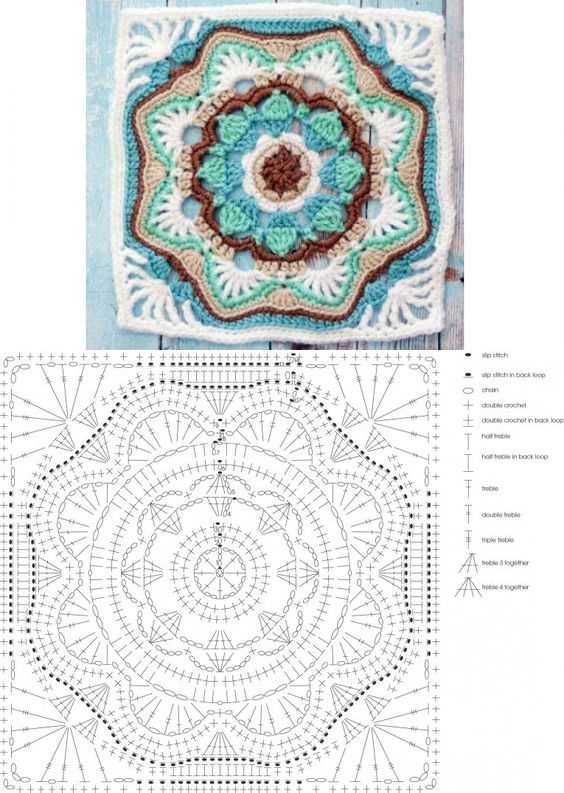
The pastel palette offers a soft and delicate look to the mandala pattern. It typically includes light shades of pink, blue, yellow, and green. These colors create a calming and soothing effect, making the mandala pattern perfect for relaxation and meditation.
2. Earthy Tones
Earth tones, such as brown, beige, and olive green, give a natural and organic feel to the mandala pattern. These colors are inspired by nature and bring a sense of grounding and stability. Earthy tones are popular in mandala patterns with a bohemian or rustic theme.
3. Vibrant Rainbow
The vibrant rainbow color combination is a popular choice for a playful and cheerful mandala pattern. It includes all the colors of the rainbow, creating a bold and eye-catching design. This color combination is often used in mandala patterns for kids or to add a pop of color to any space.
4. Monochrome
The monochrome color combination gives a sleek and sophisticated look to the mandala pattern. It involves using shades of a single color, such as various tones of blue or gray. Monochrome mandala patterns are versatile and can fit into any decor style effortlessly.
5. Jewel Tones
Jewel tones, including rich shades of emerald green, sapphire blue, and deep purple, bring a luxurious and elegant vibe to the mandala pattern. These colors add depth and intensity, making the mandala pattern stand out as a statement piece.
When choosing a color combination for your knit mandala pattern, consider the mood and atmosphere you want to create. Experiment with different combinations to find the one that speaks to you and complements your style and space.
Using Mandala Patterns for Home Decor and Accessories
Mandala patterns have become increasingly popular in home decor and accessories. These intricate circular designs can add a touch of elegance and creativity to any space. Whether you choose to knit a mandala blanket or crochet a mandala wall hanging, these patterns offer endless possibilities for incorporating them into your home.
1. Mandala Blankets: Knitting a mandala blanket is a great way to showcase these beautiful patterns. The circular design can create a stunning focal point on your bed or couch. You can use a variety of colors to reflect your personal style and create a unique piece of decor.
2. Mandala Wall Hangings: Crocheting a mandala wall hanging is another popular choice. These intricate designs can be used to add color and character to your walls. Hang them in your living room, bedroom, or even in your home office to create a cozy and inviting atmosphere.
3. Mandala Pillow Covers: If you prefer a smaller project, consider knitting or crocheting mandala pillow covers. These can be a quick and easy way to update the look of your living room or bedroom. Choose colors that complement your existing decor and enjoy the transformation they bring.
4. Mandala Rugs: For those looking to make a bold statement, consider knitting or crocheting a mandala rug. These large circular designs can be a stunning addition to any room. Place them in your living room or bedroom for an eye-catching focal point that is sure to impress.
Overall, using mandala patterns for home decor and accessories is a creative and exciting way to add color and style to your space. Whether you choose to knit, crochet, or incorporate these patterns in other ways, the possibilities are endless. Explore different color combinations and experiment with different techniques to create a unique and personalized look that showcases your creativity and love for mandala designs.
Inspiring Ideas for Using Knitted Mandala Patterns
Knitted mandala patterns offer a wide range of creative possibilities for various uses. Whether you are interested in home decor, fashion accessories, or even gifts, here are some inspiring ideas for incorporating knitted mandalas into your projects.
One of the most popular uses for knitted mandalas is as decorative elements for home decor. You can create stunning wall hangings by combining multiple mandalas in different sizes and colors. Hang them in your living room or bedroom to add a unique and eye-catching focal point to the space. Alternatively, you can use smaller mandalas as coasters or table decorations, creating a beautiful and harmonious atmosphere for your meals or gatherings.
When it comes to fashion accessories, knitted mandalas can be used in a variety of ways. For example, you can sew or attach a small mandala to a plain hat, scarf, or bag to instantly transform it into a fashionable and personalized accessory. You can also use larger mandalas as shawls or ponchos, adding a touch of bohemian elegance to your outfits. With their intricate and mesmerizing patterns, knitted mandalas are sure to make a statement and turn heads wherever you go.
Furthermore, knitted mandalas can be a thoughtful and cherished gift for your loved ones. You can create personalized mandalas with their favorite colors or incorporate meaningful symbols into the design. Framed mandalas can be a beautiful and unique gift for special occasions such as weddings, birthdays, or housewarmings. Additionally, you can turn mandalas into pillows or blankets for a cozy and comforting present that will be treasured for years to come.
In conclusion, knitted mandala patterns offer endless possibilities for creativity and expression. From home decor to fashion accessories and thoughtful gifts, these intricate and mesmerizing patterns can enhance any project. So grab your knitting needles and start exploring the world of knitted mandalas today!